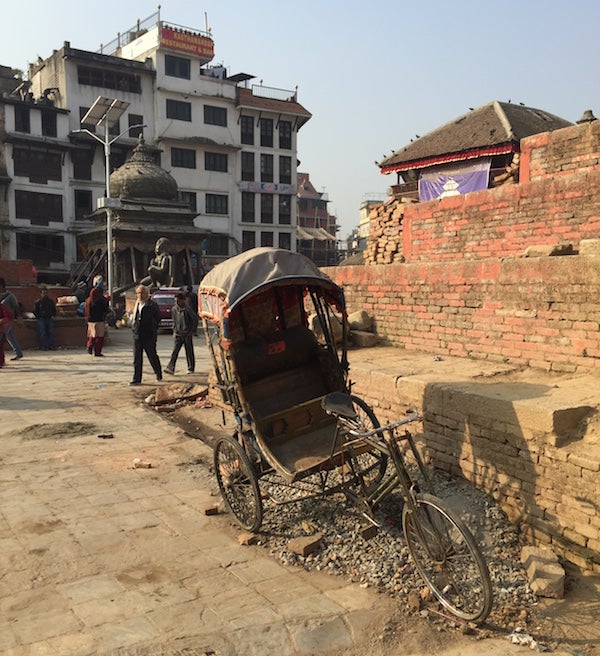This article was published in Scientific American’s former blog network and reflects the views of the author, not necessarily those of Scientific American
Energy security is often spoken of as a relative measure, with a potential to improve. However, in a global energy market, it is seldom the case that a country does not rely on at least some imports, even though certain smaller countries are getting close to producing all of their own electricity from domestic renewable sources. In the case of Nepal, a crisis has forced its hand.
The mountainous country suffered from two devastating earthquakes earlier this year and is now facing a political blockade with India, its southern neighbor accounting for most energy imports, and all other things for that matter.
This double-whammy (earthquakes & blockade) presents a case study in what happens when a country runs out of oil: usually a theoretical scenario, but now a real ‘Nepal Scenario’ with some surprising consequences.
On supporting science journalism
If you're enjoying this article, consider supporting our award-winning journalism by subscribing. By purchasing a subscription you are helping to ensure the future of impactful stories about the discoveries and ideas shaping our world today.
Generally, transport systems do not like the oil spigots being turned off. As a consequence, Nepalese are switching from cooking with gas to electric stoves as well as firewood. And, as I discovered on a recent trip, flights leaving Nepal are being rerouted with unusual fuel layovers.

Destruction from the earthquakes still visible in downtown Kathmandu. Image credit: Tali Trigg.
The blockade has led to blackouts and fuel smuggling, as well as very hard times for Nepalese using the existing energy system, but the question might be: what lessons can Nepal and others learn from this crisis?
For one, Nepal could do a lot better job tapping into its hydropower potential. With only 750 MW of installed generating capacity, demand is already around 1,300 MW, and yet, Nepal sits on about 80,000 MW of hydropower potential. Yes, you read that right. Only 1% of hydropower potential is being used. In fact, little Bhutan next door has already outshone Nepal by installing 1,500 MW.
Despite this potential – and temporarily cleaner skies due to the oil shortages – Nepal is ranked as the 2nd most polluted country in the world, after Bangladesh, with Kathmandu’s air quality surpassing WHO guidelines by 20x, even with a population of just under 2 million. Faced with epic smog and an overarching energy crisis, Nepal is moving ahead with a range of bottom-up solutions.
For one, Nepal’s capital city has over 750 electric public transit vehicles, so-called ‘Tempos’, which are also used to promote women's equal participation in the workforce. Another initiative uses solar power to empower women through sustainable entrepreneurship*. And finally, a series of mini-hydro projects might show the way forward for installed capacity.
No matter what, this ‘Nepal Scenario’ is exemplifying the true meaning of what it means to be dependent on highly-polluting fossil fuels. Lessons learnt from this experience could include moving from oil security to energy security, and from trading shortages and blackouts to locally and renewably produced energy.
Fortunately, there are several worthwhile initiatives underway, paving the way forward towards sustainable development – including gender equality, clean air, and true energy security – and we can all hope that Nepal succeeds.
*Disclosure: founder is a friend